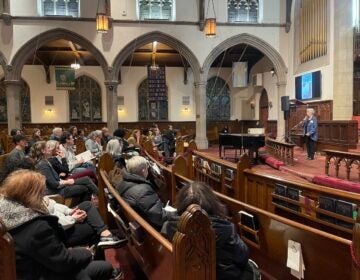To compete with charters, Pa. district schools now polishing up their brands
More and more traditional public schools are getting into branding programs, says the Pennsylvania Association of School Administrators.

The Upper Darby School District in Delaware County, Pa. is looking to upgrade its brand. (The Upper Darby School District's Facebook page)
It’s not unusual to see billboards, advertisements, and glossy brochures for charter schools in Pennsylvania.
Now, more traditional public schools are crafting their image just as carefully as they compete for students.
In the Upper Darby School District in Delaware County, more than half of all students are minorities, and more than half are economically disadvantaged. The reputations of districts like this one don’t always match academic realities, according to Dana Spino, director of district media relations.
“We know our story, and we want to be able to tell our story, and I think there is a public perception of public education that doesn’t reflect Upper Darby in particular,” she said.
For example, parents comparing public and charter schools might not know about the district’s Advanced Placement course offerings or that the dropout rate is lower than in many neighboring districts.
In December, Upper Darby approved hiring a branding firm to create a new logo and marketing plan over the next 18 months. Magnum Marketing will receive $70,000 to change how the suburban Philadelphia school district communicates, from researching what the local community values in a school, to creating branded materials, to analyzing how these efforts effect social media engagement. The goal, said Spino, is to not only retain students, but also to attract staff amid fears of a growing teacher shortage.
“We’re seeing a general trend where more and more districts are getting into a branding type of program,” said Mark DiRocco, the executive director of the Pennsylvania Association of School Administrators.
That shift is relatively recent, he said, and driven by competition.
“Public schools have been reluctant to go down that road, especially school districts that are struggling with resources,”said DiRocco. However, “cybercharters spend thousands of dollars a year on radio advertising, TV advertising. Local school districts now feel they have to counter that to tell their own story.”
From 2014 to 2017, 12 of the state’s 14 cybercharter schools spent more than $21 million on advertising and promotion, according to an investigation by PublicSource. All that money comes out of tuition payments school districts hand over to charters, a flat fee for each student who leaves a district school in favor of a virtual or brick-and-mortar charter school.
Charter school advocates point out that unlike traditional public schools, they have to advertise because parents must actively choose charter enrollment, rather than being funneled into a neighborhood public school.
The Commonwealth Foundation, which supports charter schools, says more marketing means more competition between schools.
“Marketing and branding isn’t necessarily a bad development. It shows we have more competition, which is a very good development,” said policy director Elizabeth Steele.
In the Bethlehem Area School District, it was the idea that the district — and by extension taxpayers — already pays large sums to charter schools that convinced Superintendent Joseph Roy to look into marketing.
“We’re paying $26 million [a year] to charter schools, and we’re going to spend $50,000 to reduce that bill,” he said. Bethlehem has hired a marketing firm that is expected to start producing branded material for the district this spring. The campaign will be aimed at parents with children nearing kindergarten age, he said, since that is when most students leave the district.
The district has also retained a social media consultant to try to grow its presence online.
“For the social media piece, it’s not just about slowing the growth of charters,” said Roy.
Amid funding cuts from Harrisburg, he said, perceptions among voters without school-aged kids are just as important.
WHYY is your source for fact-based, in-depth journalism and information. As a nonprofit organization, we rely on financial support from readers like you. Please give today.





